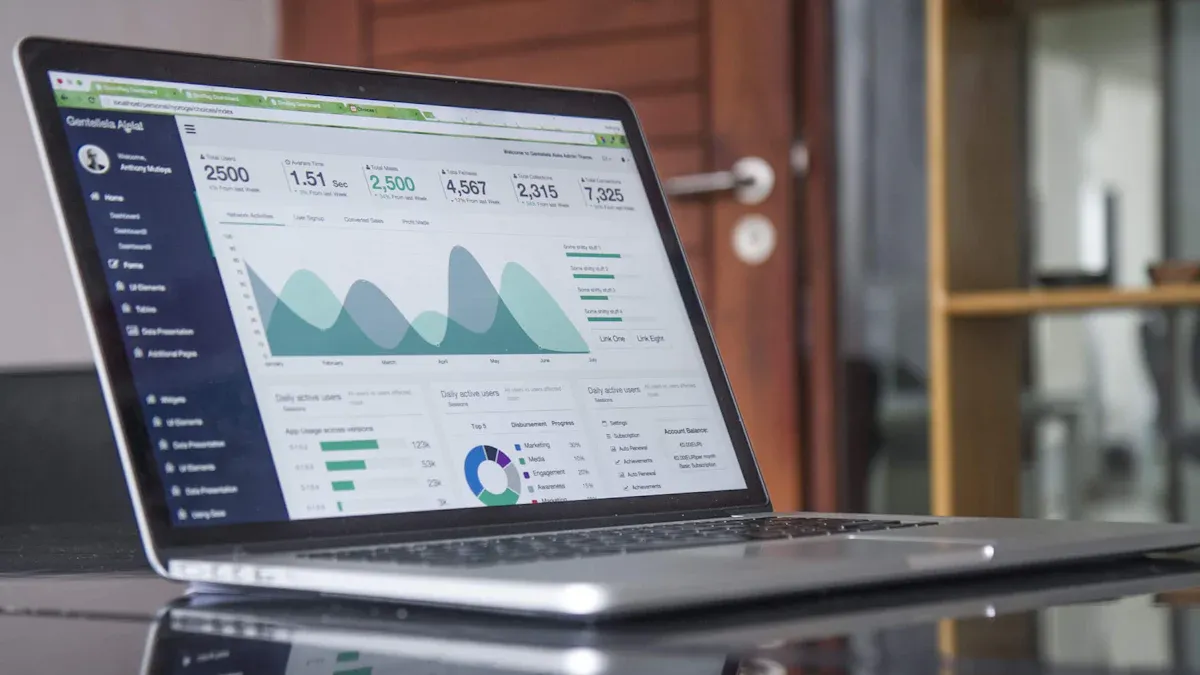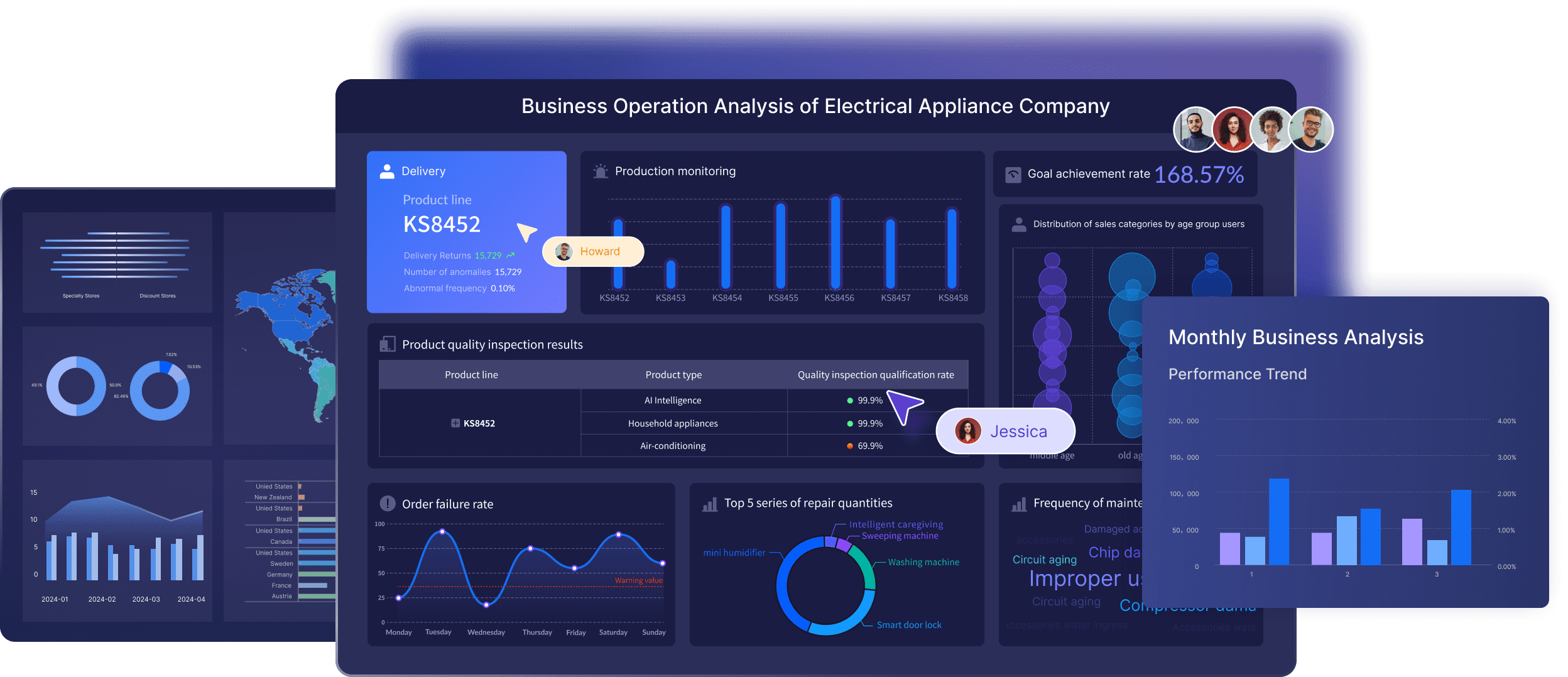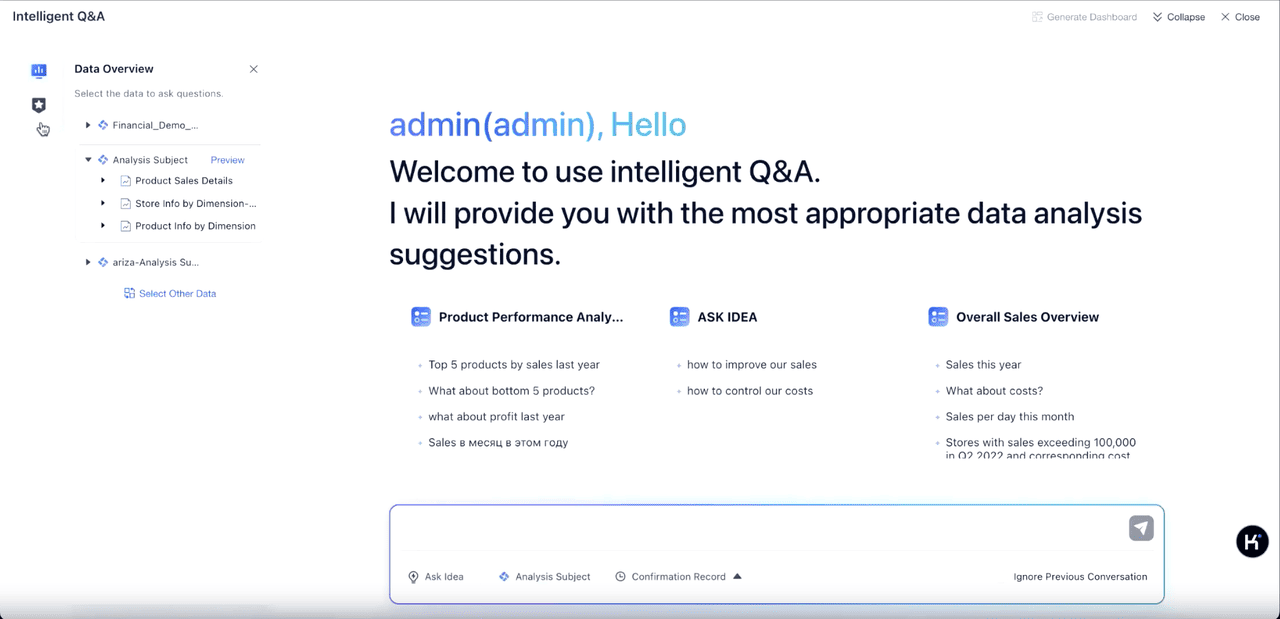MicroStrategy business intelligence stands as a leading business intelligence software platform that transforms enterprise data into actionable insights. MicroStrategy enables organizations to analyze information, automate large dataset processing, and democratize access for both technical and non-technical users. Around 26% of enterprises worldwide use business intelligence software platforms like MicroStrategy, with adoption rates climbing above 80% among large organizations. Companies that implement BI platforms experience faster and more accurate decision-making, better alignment with strategic goals, and improved risk management. FineBI also supports these capabilities for modern enterprises.

MicroStrategy business intelligence stands as a comprehensive business intelligence platform designed for modern enterprises. The platform provides a wide range of BI capabilities, including interactive dashboards, scorecards, ad hoc queries, and automated business intelligence reports. MicroStrategy uses a ROLAP architecture, which allows users to drill down into relational databases and view transactional details. The microstrategy product suite includes tools for in-memory analytics, enabling fast data slicing and dicing. The platform supports access through web, desktop, and mobile interfaces, making it flexible for different user roles. MicroStrategy can be deployed on-premises or in cloud environments such as AWS and Microsoft Azure. The platform’s single metadata layer ensures consistency and streamlined maintenance across all analytics applications.
Tip: MicroStrategy enables organizations to build transaction-enabled analytics apps without writing code, using features like HyperIntelligence.
Key functionalities of MicroStrategy include:
MicroStrategy integrates data from multiple sources to deliver unified analytics and actionable insights. The platform uses a federated analytics approach, applying consistent business definitions and calculations across diverse data sources through a semantic layer. Secure connectors and REST APIs allow connection to various databases, cloud platforms, and proprietary systems. The semantic graph acts as a centralized data brain, maintaining business logic and relationships. This ensures uniform metrics and definitions across all sources.
The platform supports multi-cloud and hybrid deployments, allowing data to remain in its original secure environment. MicroStrategy respects existing security controls and compliance requirements, transmitting only encrypted query results and metadata. Self-service capabilities empower business users to blend on-premises and cloud data without IT bottlenecks. Integration with identity management systems and support for open standards like SQL, REST APIs, and OAuth enhance flexibility and security.
Note: MicroStrategy’s cloud-native architecture provides scalability and advanced security features, including multi-layer encryption and blockchain-based audit trails.
A table below highlights MicroStrategy’s market presence compared to other BI providers:
| Provider | BI Tools Ranking | Mindshare (Aug 2025) | Average Rating | Number of Reviews | Recommendation Rate |
|---|---|---|---|---|---|
| MicroStrategy | 7th | 2.8% | 8.2 | 161 | 92% |
| Digital.ai Intelligence | 52nd | 0.2% | 0.0 | 0 | N/A |
MicroStrategy’s broad adoption spans industries such as business services, finance, technology, retail, and manufacturing. The platform supports large enterprises, with many companies having over 10,000 employees and $1B+ in revenue.
MicroStrategy business intelligence delivers several key benefits for enterprises. The platform offers scalability and advanced analytics capabilities, supporting thousands of users and providing embedded intelligence. Multi-cloud support allows integration with AWS, Azure, Google Cloud, and major data warehouses. Strong governance features, including role-based access and compliance controls, ensure secure and reliable analytics.
MicroStrategy uses AI-driven automation to accelerate dashboard creation and insight delivery. Business users can generate visual analytics quickly, enabling faster decision-making. The platform’s self-service BI capabilities empower non-technical users to create reports and dashboards independently. Advanced analytics and AI features, such as predictive modeling, provide deeper insights beyond basic reporting.
MicroStrategy converts complex raw data into easy-to-understand visual dashboards. Users can identify trends and opportunities quickly. Mobile access ensures that critical data is available anytime, supporting timely decisions. Robust security and compliance features maintain data integrity and trustworthiness.
Callout: Enterprises often switch to MicroStrategy from other business intelligence tools due to outdated software, limited scalability, and high maintenance costs. MicroStrategy’s native semantic layer ensures data accuracy and consistency, reducing inefficiencies and improving productivity.
MicroStrategy enables organizations to transform overwhelming volumes of raw data into clarity and evidence-based strategies. The platform offers over 100 types of visualizations and customizable interactive analytical documents called Dossiers. Predictive analytics and natural language processing features allow users to perform advanced queries and forecasting. HyperIntelligence delivers zero-click insights embedded directly into daily applications, enhancing accessibility.
MicroStrategy’s centralized data governance and granular security controls foster trust in data-driven decisions. Extensive data connectivity with over 300 native connectors integrates diverse sources, providing a unified view of organizational data. Mobile capabilities empower users to access insights anytime, supporting a data-driven culture across the enterprise.
MicroStrategy stands out as a business intelligence tool with robust data integration capabilities. The platform connects to over 200 data sources, including relational databases, big data platforms like Hadoop and Cassandra, cloud services, flat files, and social media feeds. Enterprises can also link MicroStrategy to applications such as IBM WebSphere and SharePoint. This wide connectivity allows organizations to unify data from multiple environments, supporting complex data analytics and business intelligence needs. MicroStrategy intelligence server manages these connections, ensuring secure and efficient data flow. Compared to other BI platforms, MicroStrategy offers more advanced connectors and automation options, making it highly adaptable for diverse data integration scenarios. Real-time dashboards update instantly as new data arrives, helping users respond quickly to changing business conditions.
Tip: MicroStrategy’s support for real-time data analysis and flexible data modeling enables quick, interactive responses, even with large datasets.
MicroStrategy provides a rich set of analytics and data visualization tools that enhance data analysis and interpretation. Users access interactive dashboards through the MicroStrategy Library, which offers smart recommendations and collaboration features. The platform supports hundreds of built-in and open-source visualization options, allowing users to customize dashboards for specific needs. Enhanced filtering lets users explore data intuitively, while hierarchy reporting helps visualize complex data structures. MicroStrategy integrates with R and Python, empowering advanced analytics and machine learning. Real-time dashboards allow enterprises to monitor and analyze data as it updates, providing timely insights. Embedded BI capabilities enable seamless integration with platforms like SharePoint, supporting unified data analysis and visualization across the organization.
MicroStrategy delivers an ai-powered bi solution that transforms how organizations forecast and interpret data. The platform integrates large language models and generative AI features, such as Auto Answers and Auto Dashboard, which improve data ingestion and analytical precision. These capabilities boost forecasting accuracy by up to 40%. MicroStrategy’s AI features include Auto Narratives, which generate natural language summaries of data visualizations, and Auto AI bots that provide trusted answers within Microsoft Teams. The semantic layer ensures data consistency, supporting reliable AI analytics. Automated dashboards and predictive insights help users recognize patterns, forecast trends, and respond proactively to market changes. MicroStrategy’s ai-powered bi solution also enhances accessibility, allowing users to interact with analytics through natural language queries and automated workflows.
MicroStrategy provides a user-friendly interface that supports a wide range of users. Business analysts, executives, and IT professionals can access dashboards and reports through web, desktop, and mobile devices. The platform offers drag-and-drop tools, making it easy to create and modify visualizations. Users can personalize their analytics portals and receive real-time notifications. MicroStrategy’s embedded business intelligence features allow users to access insights directly within their daily applications. This approach helps organizations improve decision-making and encourages a data-driven culture.
Tip: MicroStrategy’s intuitive design reduces the learning curve for new users and supports collaboration across departments.
MicroStrategy is built to handle the demands of large organizations. The platform supports multi-node clustering, which allows horizontal scaling as user numbers grow. In-memory data cubes optimize performance, delivering fast response times even with massive datasets. MicroStrategy’s architecture scales both vertically and horizontally, making it suitable for enterprise business intelligence needs. Organizations managing high-volume transactional systems benefit from seamless performance and reliability.
MicroStrategy offers flexible deployment choices to meet diverse business requirements. Organizations can select on-premises, fully managed cloud, or hybrid cloud environments. The platform supports major cloud providers, including Microsoft Azure, AWS, and Google Cloud. Hybrid deployments allow companies to keep some data on-premises while leveraging cloud scalability. MicroStrategy’s cloud-agnostic design enables seamless migration between platforms without service disruption. Customers can choose self-managed or fully managed services, depending on their control and support needs.
Note: Migration tools help organizations transition from on-premises to cloud deployments smoothly, ensuring data integrity and minimal downtime.

MicroStrategy enables organizations to make data-driven decisions by providing real-time access to accurate information. Executives and managers use these actionable insights to respond quickly to changing business conditions. The platform’s analytics tools help teams reduce costs and boost productivity. Advanced sharing features support collaboration, allowing departments to work together and make faster decisions. Customizable reporting lets users create tailored reports without coding, while cloud-based access supports remote work and flexibility. Companies gain increased visibility into their data, which helps them identify trends and measure performance. Predictive analytics improve customer experiences by understanding behavior and tailoring marketing efforts. Automation of reporting and processes saves time and increases productivity, leading to valuable insights for better decision-making.
MicroStrategy delivers valuable insights from data across many industries. The table below highlights how different sectors benefit from the platform:
| Industry | Company | Metrics / Impact | Description of Impact |
|---|---|---|---|
| Home Improvement | Lowe's | User scalability: 16,000+ employees; transaction scale: billions of transactions; inventory tracking | Supports over 16,000 employees with BI apps to manage inventory, improve margins, and identify sales opportunities. |
| Retail (Off-price) | Ross Stores | Enterprise deployment: 8 large-scale BI applications; multi-terabyte data warehouse | Uses BI for merchandising, store operations, supply chain efficiencies, and labor management reporting. |
| Freight Transportation | Con-way Freight | Advanced regression and optimization models; analytical objectives | Applies regression models to anticipate customer behavior and optimize freight flow. |
| Internet Services | Yahoo! | Data scalability: analysis of petabytes of web traffic and ecommerce data | Generates dashboards and reports to optimize websites for hundreds of millions of users monthly. |
These examples show how MicroStrategy supports large-scale operations, complex data analysis, and real-time data insights in different fields.
MicroStrategy empowers both technical and non-technical users to access and use data insights effectively.
Organizations report significant improvements after adopting MicroStrategy. They see faster decision-making, increased operational efficiency, and improved collaboration. For example, Crate&Barrel reduced their reports from 35,000 to under 400, simplified data management, and enabled real-time insights. Training and self-service analytics increased user autonomy and created a more agile, data-driven environment.
Organizations today have many options when selecting a business intelligence platform. FanRuan stands out as a leading provider, offering FineBI as a modern BI solution. MicroStrategy also remains a top choice for enterprises that need robust analytics and governance. Both platforms help companies turn data into actionable insights, but they serve different needs. Businesses must consider several factors when choosing a BI tool:

These considerations help organizations select a BI platform that supports data-driven decision-making and operational efficiency.
FineBI, developed by FanRuan, focuses on self-service analytics and agility. The platform empowers business users to connect, analyze, and visualize data without relying on IT teams. FineBI offers an intuitive drag-and-drop interface, making it easy for users to create dashboards and reports. The software supports real-time data integration from various sources, including big data platforms and cloud services. FineBI’s mobile-friendly design ensures users can access insights anywhere. The platform also provides strong data governance, role-based access, and collaboration features. Teams can share dashboards, comment on reports, and work together to solve business problems. FineBI’s AI-driven tools help users interpret trends and forecast outcomes, supporting proactive decision-making.

Selecting the right BI platform depends on an organization’s size, goals, and technical needs. MicroStrategy excels in enterprise analytics, offering advanced governance, scalability, and deep integration with existing systems. Large organizations with complex data environments often choose MicroStrategy for its robust security and performance. FineBI stands out for its self-service capabilities and user-friendly design. Companies seeking agility and fast adoption may prefer FineBI, especially if business users need independence from IT. When evaluating BI tools, organizations should look for:
A table below summarizes the core strengths of each platform:
| Platform | Core Strengths | Best For |
|---|---|---|
| MicroStrategy | Enterprise analytics, governance, scale | Large enterprises, complex data |
| FineBI | Self-service, agility, collaboration | Business-led teams, fast rollout |
By matching platform strengths to business needs, organizations can maximize the value of their BI investment.
MicroStrategy gives enterprises the tools to turn data into clear, actionable insights. Companies use its drag-and-drop dashboards, real-time visualizations, and flexible deployment options to support fast, informed decisions. Many industries rely on MicroStrategy for advanced analytics and easy collaboration. FineBI also offers strong self-service analytics and agility. Organizations should match their needs with the right platform to unlock the full value of business intelligence.
What Does a Business Intelligence Developer Do in 2025
What Does a Business Intelligence Engineer Do in 2025
What Does a Business Intelligence Engineer Do at Amazon
Top Business Intelligence Tools to Explore in 2025
Both platforms support a wide range of data sources. MicroStrategy connects to over 200 sources, including databases, cloud services, and big data platforms. FineBI offers more than 60 connectors, covering relational databases, cloud warehouses, APIs, and file uploads.
Yes. Both platforms provide drag-and-drop interfaces. Users can build dashboards without coding. FineBI emphasizes self-service analytics, making it easy for business users. MicroStrategy also supports dashboard creation for users at all skill levels.
MicroStrategy uses role-based access, encryption, and compliance controls. FineBI offers enterprise-level data permission management and row-level security. Both platforms help organizations protect sensitive information and ensure only authorized users access data.
Yes. MicroStrategy and FineBI both support real-time data integration and analysis. Users can view up-to-date dashboards and reports as new data arrives, enabling faster and more informed decisions.
MicroStrategy excels in large-scale deployments, advanced governance, and complex analytics. FineBI stands out for agility and self-service features. Organizations should match their needs with the platform’s strengths for the best results.

The Author
Lewis
Senior Data Analyst at FanRuan
Related Articles

What Are Enterprise BI Solutions and How Do They Work
Enterprise BI solutions unify business data, enabling real-time analytics, secure collaboration, and smarter decision-making across your organization.
Lewis
Dec 22, 2025

What is a BI Dashboard and Why Does Your Business Need One
A BI dashboard centralizes business data, tracks KPIs, and delivers real-time insights, empowering smarter decisions and boosting business performance.
Lewis
Dec 19, 2025

Power BI vs Tableau Which Analytics Platform Wins
Power BI vs Tableau: Compare features, pricing, and integration to see which analytics platform best fits your business and data visualization needs.
Lewis
Dec 19, 2025